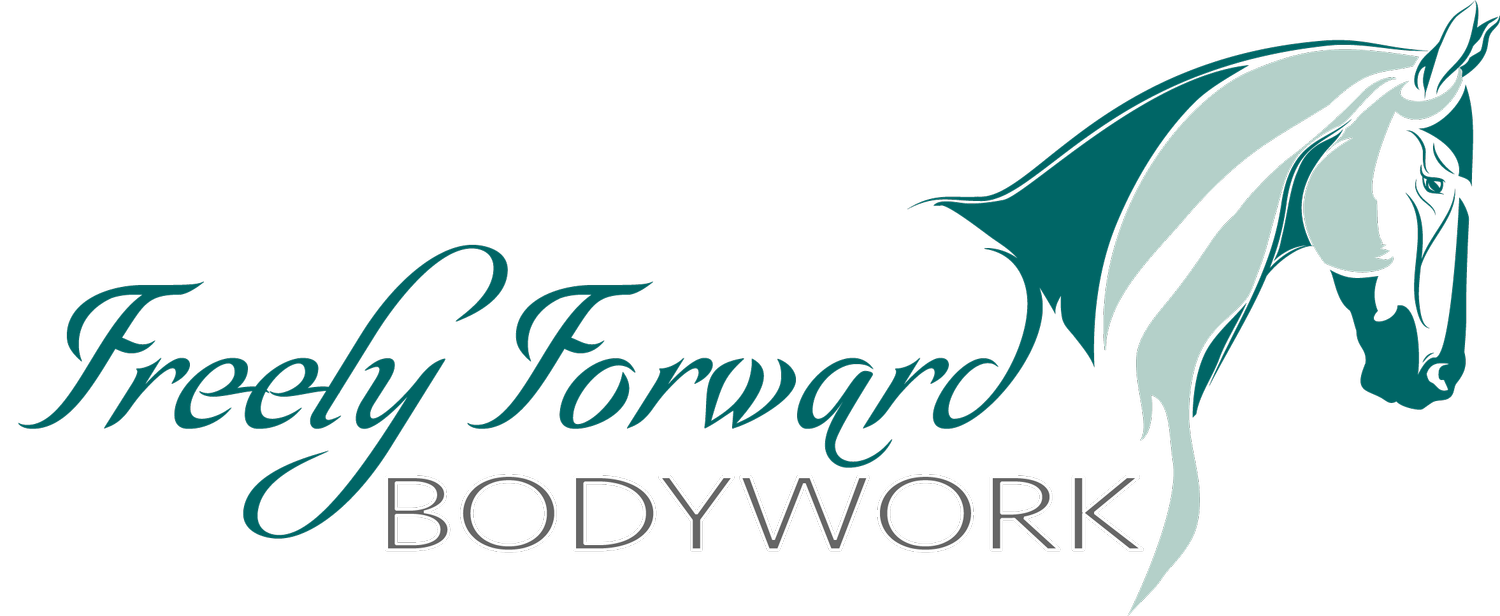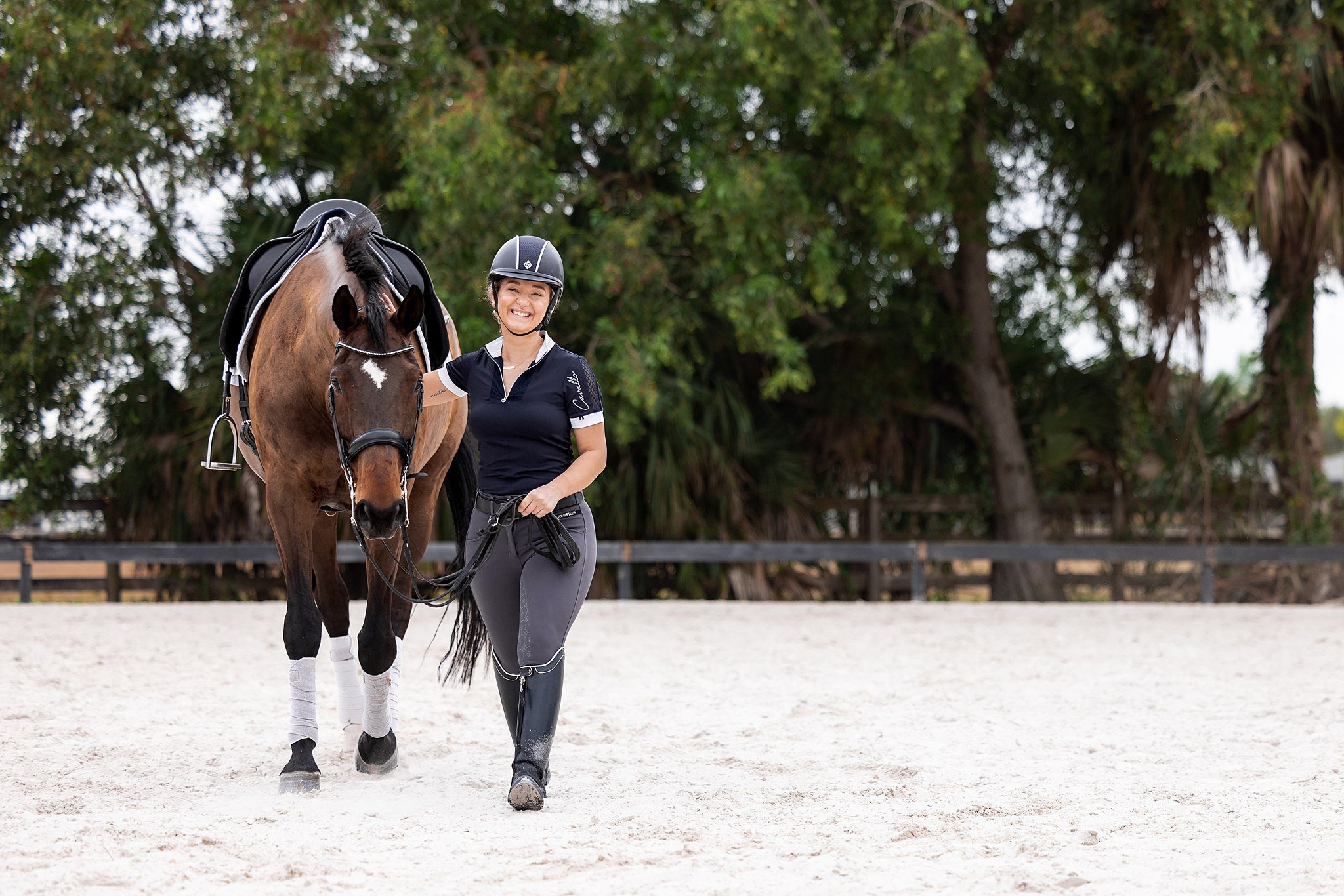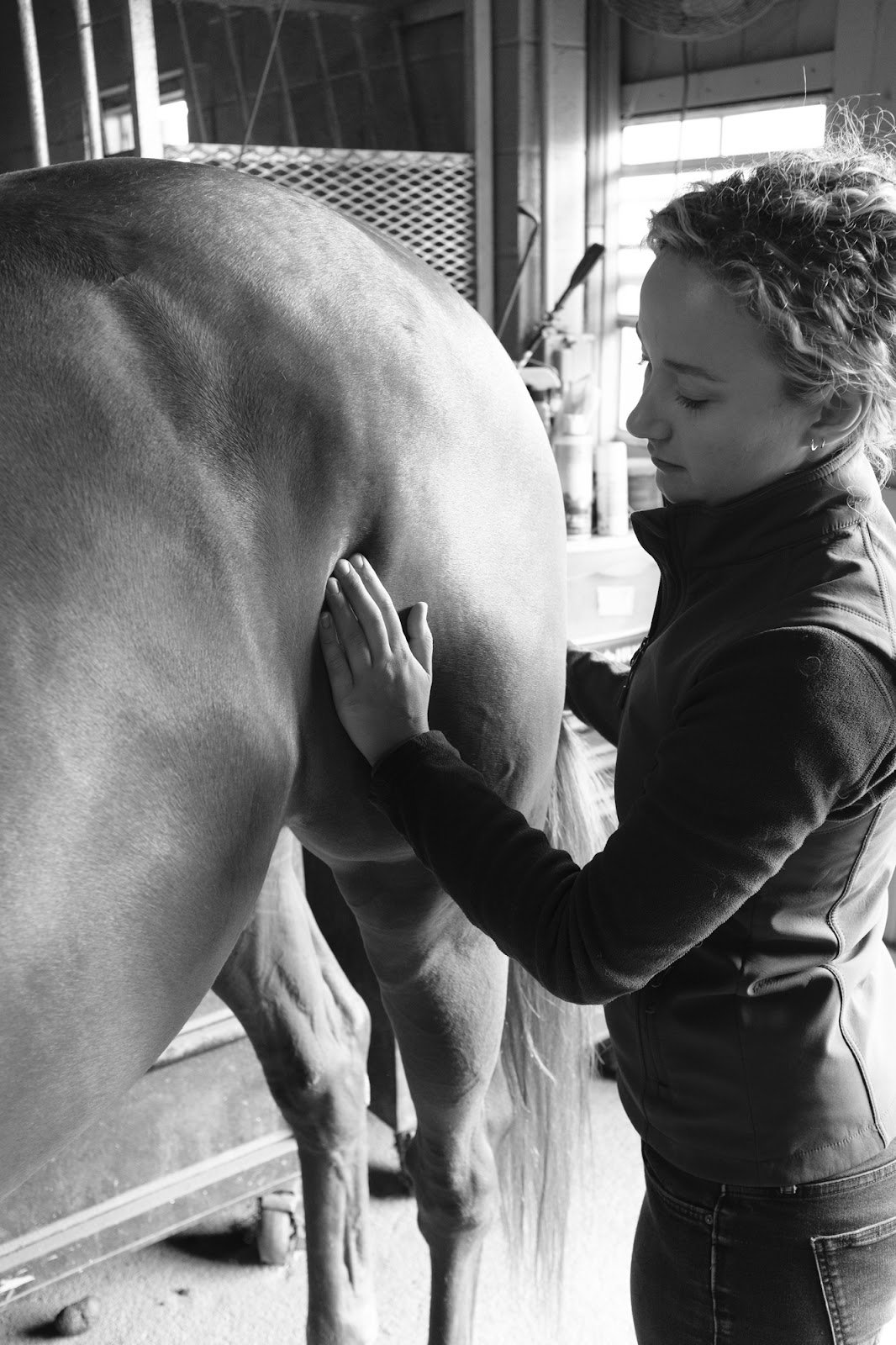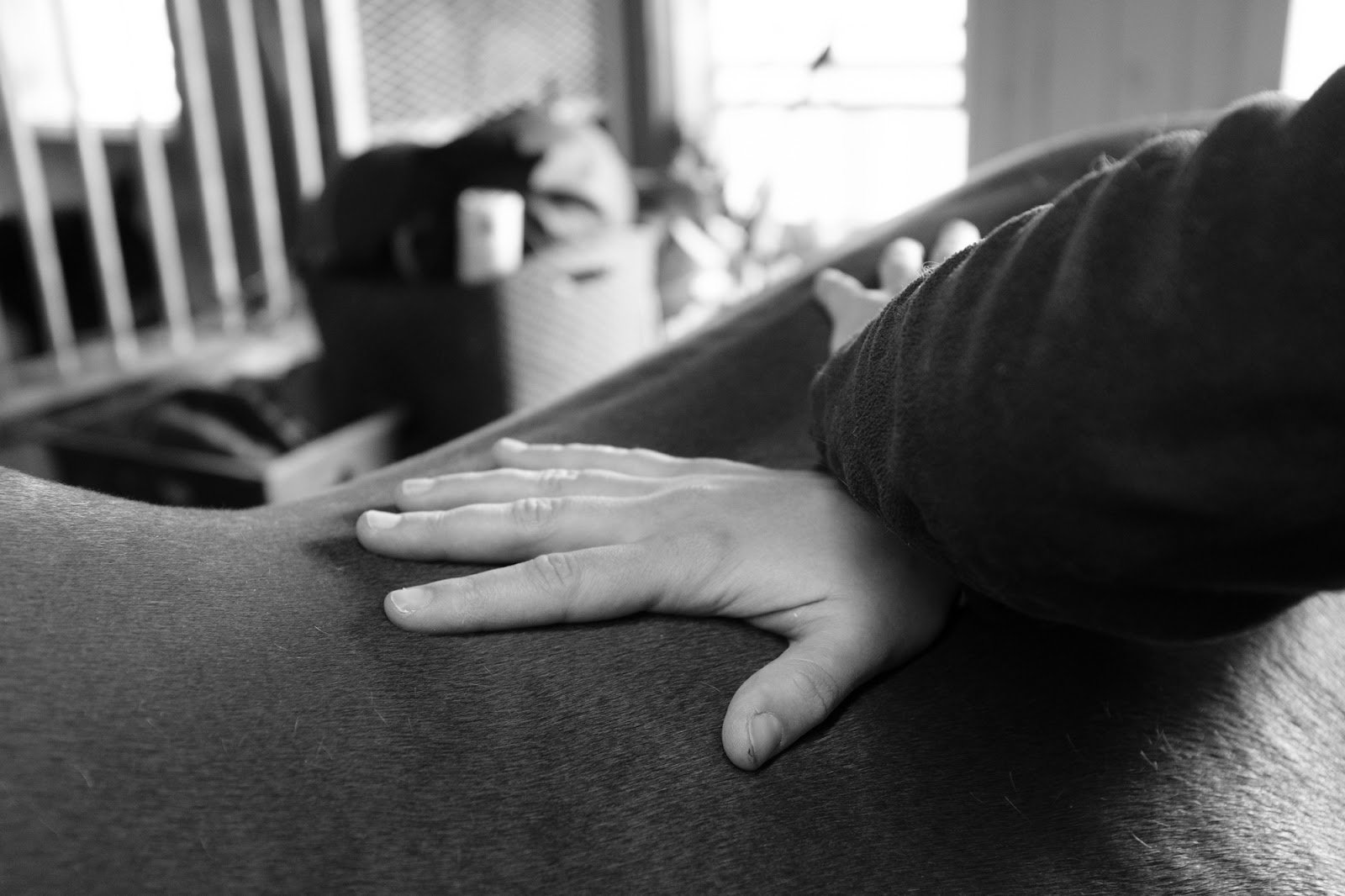Keeping Up With Maija
RESOURCES & NEWS
How Equestrians look at Lameness, Pain, and Injury in Horses
I had a really incredible lightbulb moment about the way we as equestrians look at lameness, pain, and injury in our horses.
“One Size Fits All” Horse Management
I’m going to stir the pot…
The “old way” of “one size fits all” management for horses doesn’t work. Every horse is an individual with unique needs.
Winter Riding Woes Part 2
Us riders face a special set of problems in the colder months.
I’ve outlined what I think the causes of many of those problems are, and what you can do to fix them!
Winter Riding Woes: Part 1
Our horses (and us!) face a special set of problems in the colder months.
I’ve outlined what I think the causes of many of those problems are, and what you can do to fix them!
What Actually Causes Muscle Soreness?
For years, most people thought muscle soreness was caused by lactic acid buildup. But actually, this theory was recently disproven by multiple different scientific studies!
How to Help a Girthy Horse
“My horse is girthy, how can I help?” Is one of the most common questions I get as an equine bodyworker.
If your horse hates being girthed, here’s what you need to do:
3 Things all Horse Owners Should Have in Their Phones
In case of an emergency, here are 3 things all horse owners should have in their phones
3 Ways to Alleviate your Horse’s Back Pain - From an Equine Massage Therapist
If your horse is in a downward spiral of soreness and pain, I know it’s making you feel hopeless and helpless. I want to empower you to massage your own horse and leave behind muscle soreness for good, so that you and your horse can live up to your full potential!
Top 5 Ways to Biohack your Horse’s Performance - From an Equine Massage Therapist/Former FEI Groom
It takes between 10-15 minutes for freshly oxygenated blood to reach the tendons in horses’ lower legs. Oxygenated blood helps prevent injuries. Additionally, walking enables the optimal flow of synovial fluid, which cushions horses’ joints and helps absorb the shock of exercise. A proper cool down walk allows lymph to move through the body, instead of settling excessively and causing muscle pain.
If your Horse’s Inconsistent Performance is Leaving you Frustrated, this is for you
What they don’t know is that their horse might be struggling with something called Delayed-Onset Muscle Soreness (DOMS), which is often caused by overexerting muscles before they’re properly conditioned.
How to Alleviate your Horse’s Back Pain
Here’s how to alleviate your horse’s back pain, from an Equine massage therapist
How to Help a One-Sided Horse
I spent so much time spinning my wheels-
He bulged to the left, and was totally hollow to the right.
His canter to the left was lovely, but he was anxious and tense going to the right.
I felt like I was riding two different horses.
Top 3 Bridle Fitting Tips for Equestrians
Quick win! Have a better ride TODAY by making sure your bridle fits! Thank you bit and bridle fitter @comfortfitequine for teaching me these tips!
Top 3 Tips to Bond with your Horse
This is my favorite! Riding and achieving our goals makes us feel good- how can we return the favor?
Spilling the tea…
My very first online course purchase and what it taught me & why I’ll NEVER make a program like it! 5 years ago, I was desperate to help my horse. I always thought Equine massage would benefit him, so I googled “equine massage course” and found one. It was around $1,300, which was a big investment for me at the time. I knew he was worth it and was desperate to help him, so I pulled the trigger. I was disappointed that the course barely taught me any massage techniques
The reason why I became an equine massage therapist may surprise you
I was pulled into this career for an all too familiar reason. My horse Westley and I were struggling with our partnership. He was my best friend, but I felt like we just couldn’t get on the same page, no matter how much I wanted to. He was cranky to groom, tough to ride, and got eliminated at every competition we went to. I felt hopeless. I looked high and low for an answer to what was bothering him, with numerous vets and professionals weighing in.
Are you bummed out by your horse’s scores at shows?
You know that your horse is amazing, but it seems like they never show it at competitions. Every event you try something new: You might be trying different supplements, different bits, different calming pastes, or even different trainers…But nothing seems to stick.
Horse Stretching Techniques Anyone Can Try
STRETCHING YOUR HORSE IS AN INCREDIBLY BENEFICIAL FORM OF EQUINE THERAPY, BUT DO YOU KNOW WHERE TO START? HERE ARE SOME SIMPLE BUT EFFECTIVE STRETCHES TO ADD TO YOUR TOOLBOX. INTRODUCE THESE STRETCHES ONCE OR TWICE A WEEK, THEN BUILD THEM UP MORE FREQUENTLY AS YOU GO.
The Secret Muscle Holding Back Your Riding
For years I, like many riders, have struggled with my sitting trot. I took lunge lessons, I watched youtube videos, I rode with respected trainers, and still, I found it impossible to swing my hips naturally to follow my horse’s movement. I found it so frustrating that I seriously considered giving up my dream of riding at the upper levels, doubting my talent. Luckily for me, it was around that time that I entered massage school, and started receiving regular massages. My instructor found my back and hips incredibly tight and showed me a diagram on a poster we had in class. It showed a pair of muscles on either side of the spine that begin at the end of the mid back, fan out to the inner pelvis, and insert into the tops of each femur. “This is your iliopsoas,” she told me, “it’s your major hip flexor. Because you’ve been riding your whole life, and your hips are constantly flexing and extending to follow the horse, yours are very tight. I’m going to work on them for you.” After massaging me, she showed me a few stretches to do before I rode. The next day, and over the next months, I became more and more able to open my hips and master the elusive sitting trot. I thought to myself, all this time I have been so frustrated and blaming my riding ability, when I have just been held back by a small mechanical obstacle in my own body.
How Your Hip Flexors are Affecting your Breathing While Riding
In my last blog, I highlighted the importance of diaphragmatic breathing for riders. And with this article, I am adding another layer to that concept: how your primary hip flexor, the iliopsoas, and your ability to diaphragmatically breathe are connected.
To give you some anatomical context, let me outline the iliopsoas and the diaphragm. The diaphragm is the primary muscle of breathing. This dome-shaped muscle contracts and flattens with every inhalation, creating a vacuum effect that pulls air into the lungs, then with every exhalation, it relaxes, and air is pushed out of the lungs.




























